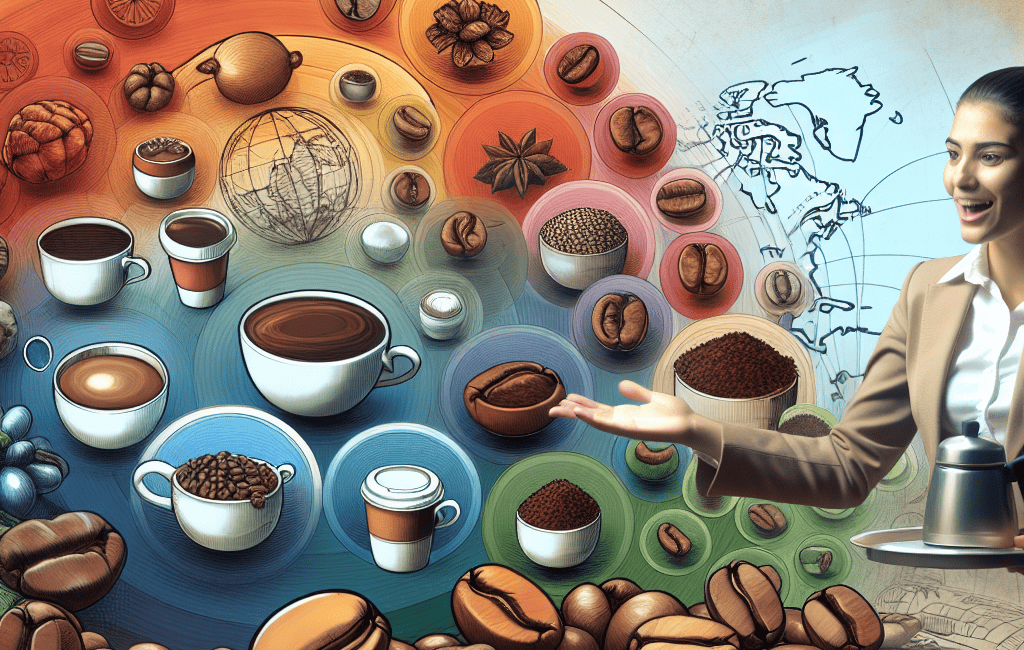
Coffee 101: A Beginner’s Guide to Coffee Beans
Welcome to Coffee 101! Whether you‘re a casual drinker or a budding enthusiast, understanding coffee beans is the first step in your caffeinated journey. In this guide, we‘ll dive into the different types of coffee beans, explore roast levels, and discover the origins of your favorite brews.
Types of Coffee Beans
There are four main types of coffee beans that are commonly used in coffee production:
- Arabica: Known for its smooth, complex flavor, Arabica beans account for about 60-70% of the world’s coffee production. They thrive at higher altitudes and have a wide range of flavors, often with fruity or floral notes.
- Robusta: These beans are stronger and have a higher caffeine content than Arabica. Robusta is often used in espresso blends due to its rich crema and bold flavor. It tends to taste more bitter and earthy.
- Liberica: A less common type, Liberica beans have a unique, floral aroma and a slightly woody flavor. They are primarily grown in West Africa and Southeast Asia.
- Excelsa: Often classified under Liberica, Excelsa beans add a fruity and tart profile to blends. They are primarily grown in Southeast Asia and are known for their distinctive taste.
Roast Levels
The roast level of coffee beans significantly impacts their flavor and aroma. Here are the main roast levels to consider:
- Light Roast: Light brown in color, these beans have no oil on the surface. They retain the most original coffee flavor and have a higher acidity, often with fruity or floral notes.
- Medium Roast: Medium brown with a balanced flavor, medium roasts have a bit more sweetness and body than light roasts. They usually exhibit a well-rounded taste.
- Dark Roast: Dark brown to almost black, these beans have a shiny surface due to the oils released during roasting. They are bold, with a pronounced bitterness. Flavors can range from smoky to chocolaty.
Coffee Origins
The origin of coffee beans plays a crucial role in their flavor profile. Here are some notable coffee-growing regions:
- Colombia: Known for its smooth and well-balanced coffee, Colombian beans are often medium roasted and have a mild flavor with hints of caramel.
- Ethiopia: Often referred to as the birthplace of coffee, Ethiopian beans are known for their fruity and floral notes, often exhibiting wine-like qualities.
- Brazil: As the largest producer of coffee, Brazilian beans tend to have a nutty, chocolatey flavor with low acidity, making them great for espresso blends.
- Jamaica: Home to the famous Blue Mountain coffee, Jamaican beans are known for their mild flavor, smooth body, and a hint of sweetness.
Conclusion
Exploring the world of coffee beans can be a delightful adventure. From understanding the differences between Arabica and Robusta to experimenting with various roast levels and origins, there‘s a whole universe of flavors to discover. So grab your favorite brew, and enjoy the journey through the aromatic world of coffee!


